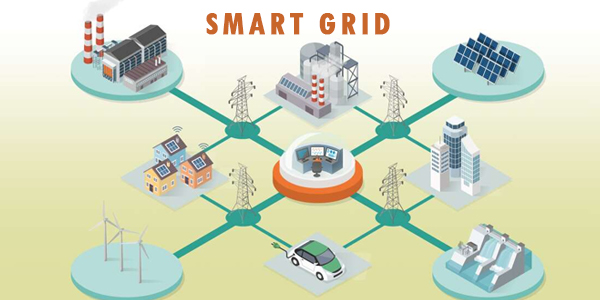Due to a number of reasons, traditional power grids are incapable of coping up with the ever-increasing power demand in the country and they need to be replaced with smart grids. To ensure this, the Government had launched a National Smart Grid Mission (NSGM) which is set to achieve its objectives by 2025. Read all about how a smart grid works and what are the advantages it offers.
A smart grid is the one that ensures two-way communication or transmission of power between consumers and distribution companies (Discoms). It’s a technology of the future and needs to be part of the power infrastructure in the country to ensure sustainability.
India’s power demand has risen by more than 7 per cent from 2019, though the increase was slightly lesser because of the lockdown imposed due to COVID-19 in the first half of the year. The peak demand during the period came down as most of the industries were shut down. But since India is a developing country, its power demand is only going to rise in the future and for this, a complete decentralisation of the traditional power grid is required to be done.
- Since India is a developing country, its power demand is only going to rise in the future and for this, a complete decentralisation of the traditional power grid is required to be done.
- India’s power woes are mainly because of the imbalance between the demand and supply of power and frequent power fluctuations which cause damage to electric equipment and devices.
- Excess generation of power in one region can be diverted to another region during peak hours. The smart grid also makes the transmission efficient which leads to huge cost savings.
- The National Smart Grid Mission is slated to achieve its goals by 2025. The NSGM will establish state-level project management units to support state utilities in developing their smart grid infrastructure.
Traditional power grids are not capable of handling the increasing power demand, mainly due to the following reasons:
- Inadequate supply of coal (raw material)
- Frequent power thefts
- Low efficiency of transmission
- Financial stress on power-generating companies and Discoms
India’s power woes are mainly because of the imbalance between the demand and supply of power and frequent power fluctuations which cause damage to electric equipment and devices. Many regions suffer from load-shedding due to the imbalance between the availability and consumption of power in those areas.
A smart grid is the solution to all such power woes. A smart grid provides real-time interaction between the consumers and Discoms through smart meters. Excess generation of power in one region can be diverted to another region during peak hours. The smart grid also makes the transmission efficient which leads to huge cost savings. Moreover, smart grids can heal by themselves as compared to traditional grids which require manual restoration. Smart grids are completely digital and are significantly faster in comparison to the electromechanical traditional grid.
The Government had launched National Smart Grid Mission (NSGM) in 2015 under the Ministry of Power for planning, monitoring and implementation of policies and programmes related to smart grids. The aim of the Mission was the implementation of smart electrical grids based on state-of-art technology in the fields of Internet of Things (IoT), IT (Information Technology) and Artificial Intelligence (AI), to monitor and control the flow of electricity from generation to consumption.
The National Smart Grid Mission is slated to achieve its goals by 2025. The NSGM will establish state-level project management units to support state utilities in developing their smart grid infrastructure under the NSGM guidelines. An advanced metering infrastructure (AMI) is the basic building block for implementation of a smart grid as it facilitates a real time, two-way communication between the consumer and the utility.
For NSGM to be implemented successfully, AMI needs to be developed, first at the state level and then at the national level. Under NSGM, many micro-grids will be built across the country to facilitate electricity and energy generation from renewable energy projects. The National Smart Grid Mission will also assist the Government’s FAME-II (Faster Adoption and Manufacturing of Hybrid and Electric Vehicles) scheme by encouraging the use of electric vehicles providing bidirectional power exchange between the EVs and the grid.












